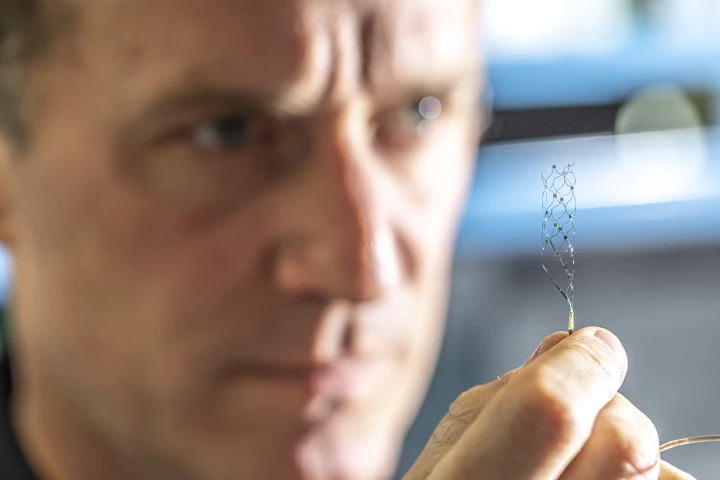Computer Human Interface
-
Synchron has announced that a trial participant has used its brain-computer interface to turn on the lights in his home, see who is at the door, and choose what to watch on the TV – hands-free and without even a voice command.
-
If you've ever wanted a pair of gloves associated with one of the great leaps in computer technology, now's the time. Prototype typing gloves developed by Douglas Engelbart and Valerie Landau to replace keyboards as interface devices are up for auction.
-
Australian startup Synchron, backed by Bill Gates and Jeff Bezos, looks set to beat Elon Musk's Neuralink to market with a safe, reliable brain-computer interface that any hospital can quickly install – without cutting a hole in your skull.
-
You can build just about anything out of Lego, and now that even includes your keyboard. Pixel is a new mechanical keyboard from MelGeek that can be customized with Lego bricks around the rim, on the back or even on the keys themselves.
-
Designed by computer pioneer Douglas Engelbart and licensed by Apple at the dawn of the personal computing era, the early three-button "X-Y" mouse is a rare and important piece of history.
-
To prevent the click-clacking of keyboards being replaced by noisy man-machine conversations, MIT researchers are developing a new system called AlterEgo that allows people to talk to computers without speaking and listen to them without using their ears.
-
The University Medical Center Utrecht has announced the success of a brain implant in a Dutch patient suffering from ALS disease that enables her to operate a speech computer with her mind.
-
DARPA has announced a program aimed at developing a cutting edge neural implant capable of forming a communication bridge between a human brain and a biocompatible device. It is hoped that technology, developed under the program, will have a wide range of applications in research and healthcare.
-
There have been numerous attempts to develop an alternative to the keyboard and mouse human-to-computer interface. Apotact Labs recently joined the fray with a four-finger glove-like design called Gest that allows you to control your computer and your mobile devices with your hands.
-
Last month, UCIC's voice-controlled computer, the Ubi, came out of beta and became available to the public. The company pushed a software update to Gizmag's beta unit and we've been interacting with the ever-present, always-on, voice-controlled vault of internet knowledge ever since.
-
Two years ago, a project to create an always-on connected computer that interacts with users by voice launched on Kickstarter. The Ubi voice-activated computer has been in beta ever since, but is now available to consumers.
-
Want to pop your cellphone's notifications away as if they were bubbles? With the Sensabubble machine, bubbles with text, colors, and even smells provide information and feedback to users and can be "deleted" instantly.
Load More











